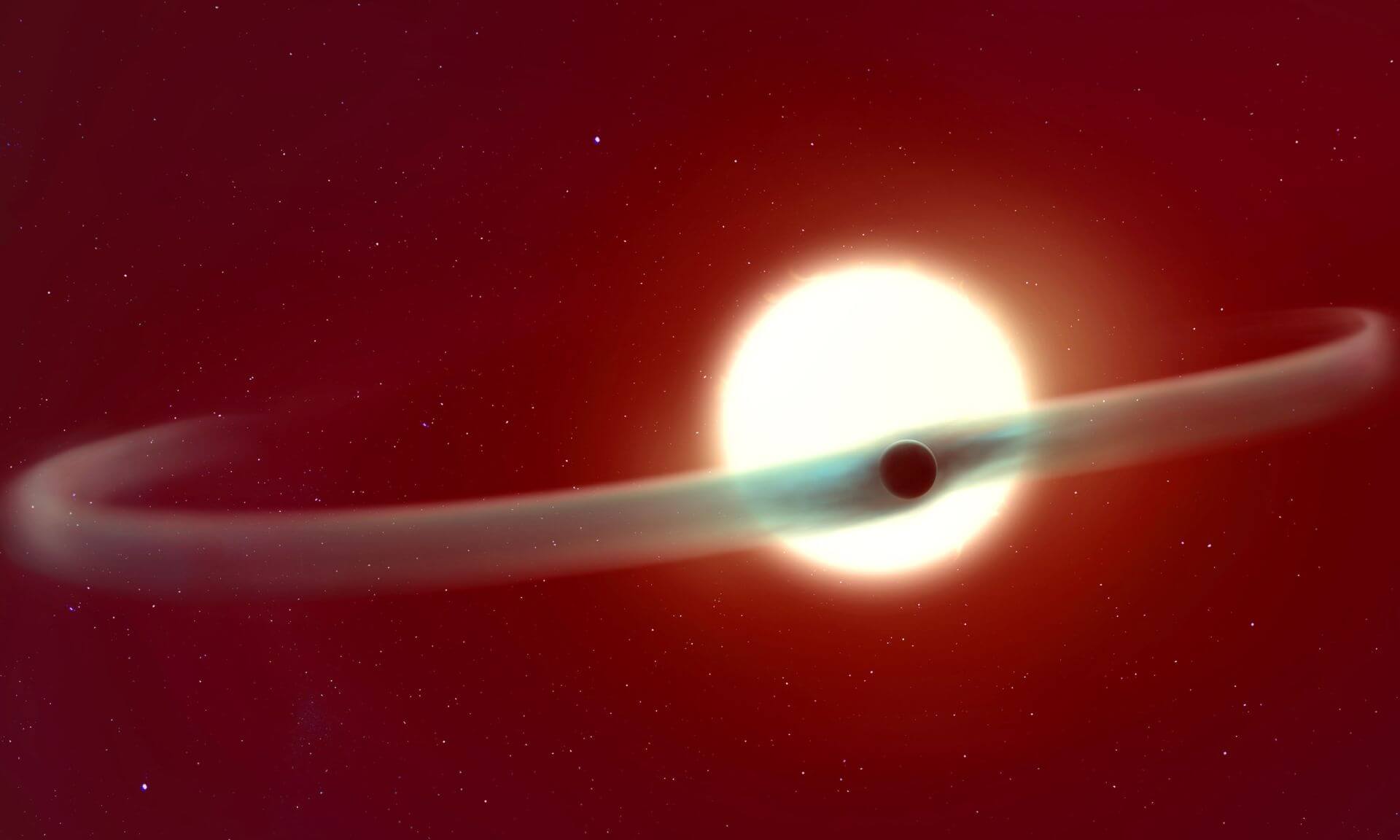Astronomers probe a “steam world”

A Canadian-led international study has revealed new insights into the atmosphere of GJ 9827 d – an exoplanet orbiting the star GJ 9827 in the constellation Pisces, about 98 light-years from Earth – using the James Webb Space Telescope (JWST).
The study found that the planet’s atmosphere contains a high concentration of heavier molecules, including a significant amount of water vapor, making astronomers think it could very well be a “steam world”.
Published in Astrophysical Journal Letters, the study was led by Caroline Piaulet-Ghorayeb, a Ph.D. candidate at Université de Montréal’s Trottier Institute for Research on Exoplanets (IREx), in collaboration with researchers worldwide.
Earlier this year, using Hubble Space Telescope (HST) data, IREx researchers announced they’d detected water in the atmosphere of GJ 9827 d, making it, at roughly two times the size of the Earth, the smallest exoplanet with a confirmed atmosphere.
Together, these significant findings open new avenues for the search for life beyond our Solar System and enhance our understanding of planetary formation and composition.
Rich in heavier molecules
What sets GJ 9827 d apart is its atmosphere's composition.
By combining JWST/NIRISS and HST data, Piaulet-Ghorayeb showed that, unlike the hydrogen-dominated atmospheres of larger planets, GJ 9827 d’s is rich in heavier molecules, with quite a bit of water vapour.
This discovery marks the first robust detection of an exoplanet atmosphere where hydrogen is not the dominant component, suggesting instead a heavier, water-rich atmosphere.
“It’s closer in molecular weight to the carbon dioxide or nitrogen-rich atmospheres that we are currently looking for on smaller rocky planets, where we would eventually look for life,” said Piaulet-Ghorayeb.
She and her team made their observations via the Canadian instrument on JWST, the Near-Infrared Imager and Slitless Spectrograph (NIRISS). Using transmission spectroscopy, they analysed the star light passing through the planet’s atmosphere as it transited (passed in front of) its host star, GJ 9827.
They then combined the new JWST observations with previous HST observations to confidently show that the observed spectral features are caused by the planet’s atmosphere and not by contamination from the system’s star.
With the data from JWST/NIRISS SOSS, scientists can finally distinguish between two types of atmospheres for the planet: one is cloudy with few heavier elements, mainly hydrogen with water only present in trace amounts; the other has a high density with many heavier elements and a lot of water.
Because GJ 9827 d is close to its star, its atmosphere is likely a mix of gas and a superheated, dense state, rather than having distinct layers or clouds.
Not thought to be inhabitable
While GJ 9827 d itself is not thought to be habitable due to its proximity to its host star and resulting high surface temperatures (around 350 degrees Celsius), the discovery is a major leap forward in the search for habitable environments.
The presence of a heavy, water-rich atmosphere on a small planet like GJ 9827 d provides a proof of concept that such atmospheres exist and can be studied with the JWST’s precision.
And that makes the prospect of finding habitable, Earth-like planets more plausible, eventually.
“This is a huge step towards the goal of searching for atmospheres around smaller, terrestrial-like planets,” said Piaulet-Ghorayeb.
“GJ 9827 d is the first planet where we detect an atmosphere rich in heavy molecules, just like the terrestrial planets of the Solar System, and the first confirmed example in a long time of a ‘steam world’ posited by the scientific community.”
Such “steam worlds” are thought to have thick, water-rich atmospheres without surface ice or liquid water, instead maintaining steam atmospheres due to their proximity to their host stars. They’re like the icy moons Europa and Ganymede, only close enough to their stars that water appears as steam in the atmosphere, not under an ice layer.
Further planned JWST observations of GJ 9827 d in the coming months could shed more light on the components of its steam atmosphere, the astronomers hope.
An elusive goal – until now

For years, scientists have focused on the detection of atmospheres on large gas giants and mini-Neptunes — planets much larger than Earth and with atmospheres dominated by hydrogen, like Jupiter and Neptune in our Solar System.
But until now, detecting atmospheres around smaller planets, closer to Earth-sized, has remained an elusive goal.
For now, all the planets we’ve detected that have atmospheres are giant planets, or at best mini-Neptunes,” said Piaulet-Ghorayeb, the study’s lead author.
“These planets have atmospheres made up mostly of hydrogen, making them more similar to gas giants in the Solar System than to terrestrial planets like Earth, which have atmospheres dominated by heavier elements.”



